RARE! WWII 1945 CONFIDENTIAL "German Mortar Positions" 8th Air Force 100th Bomb Group (Siegfried Line Missions) Military Intelligence Report Grouping

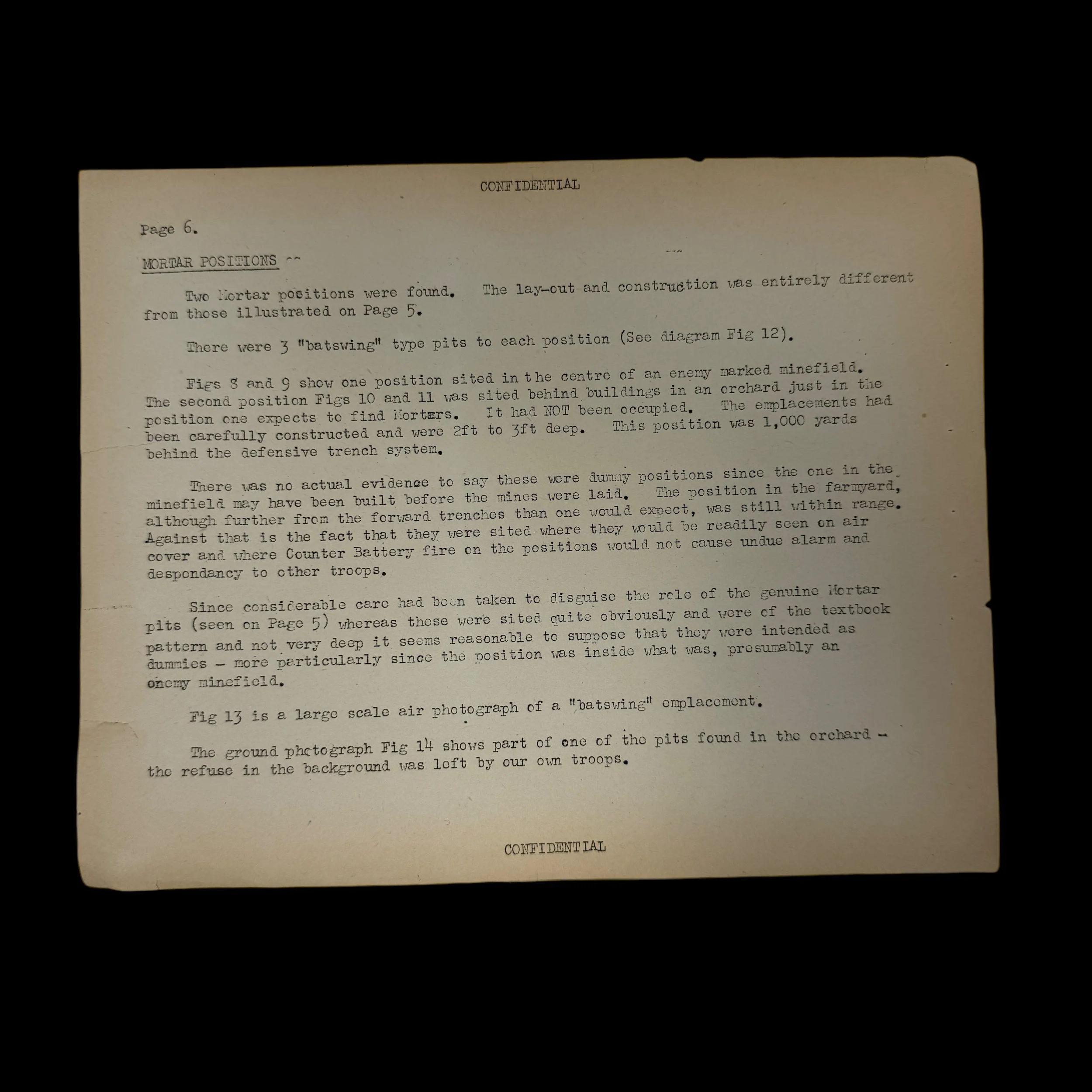
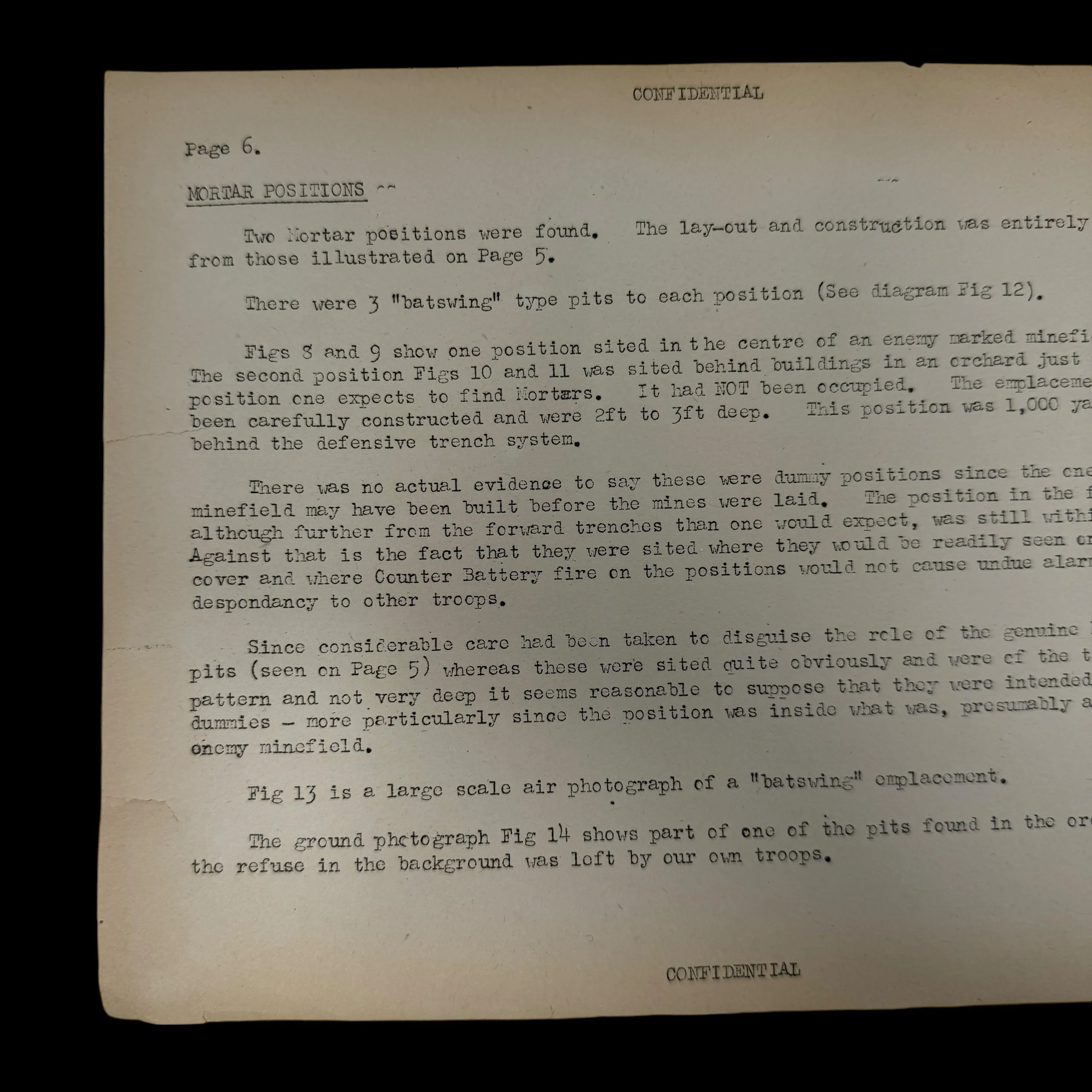
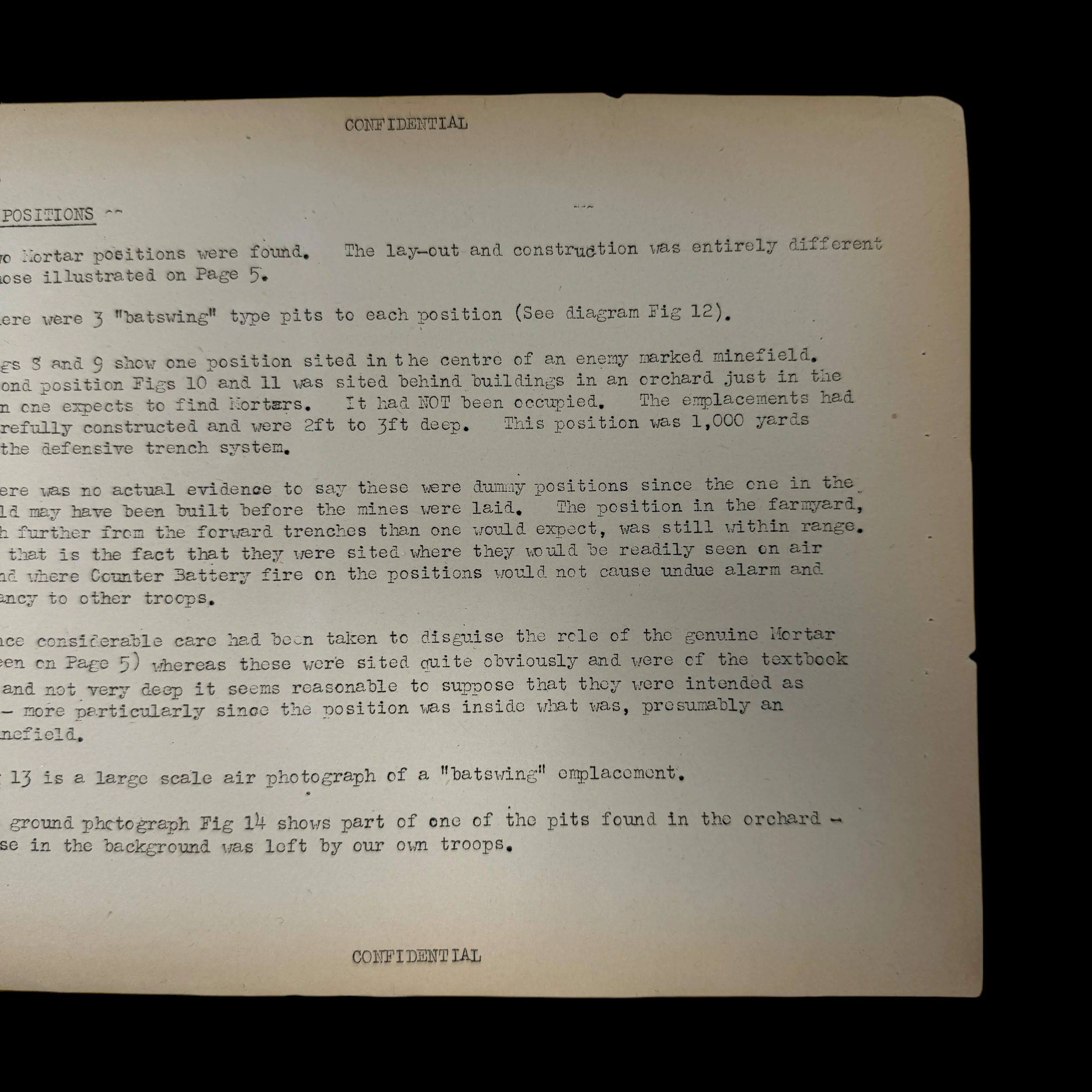
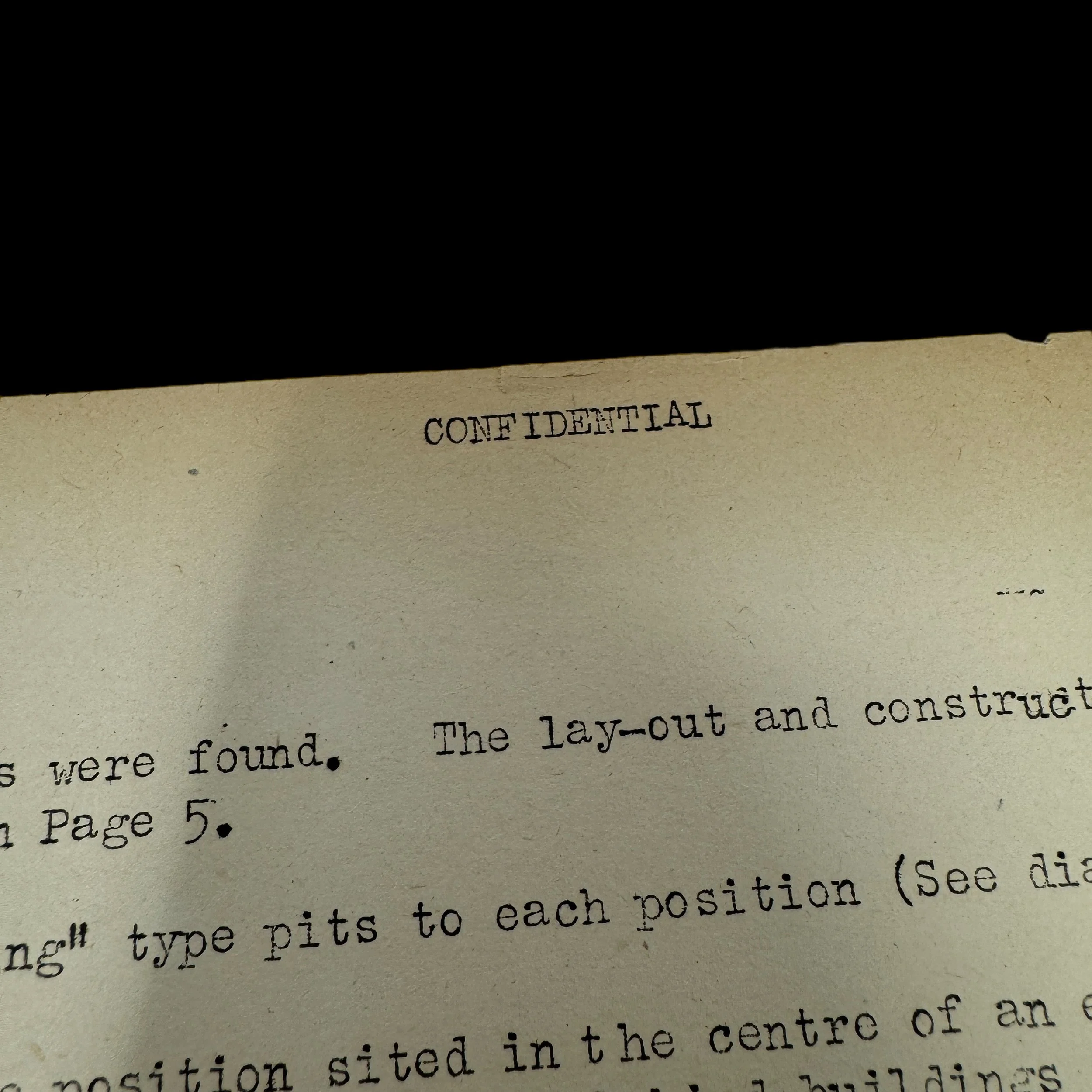
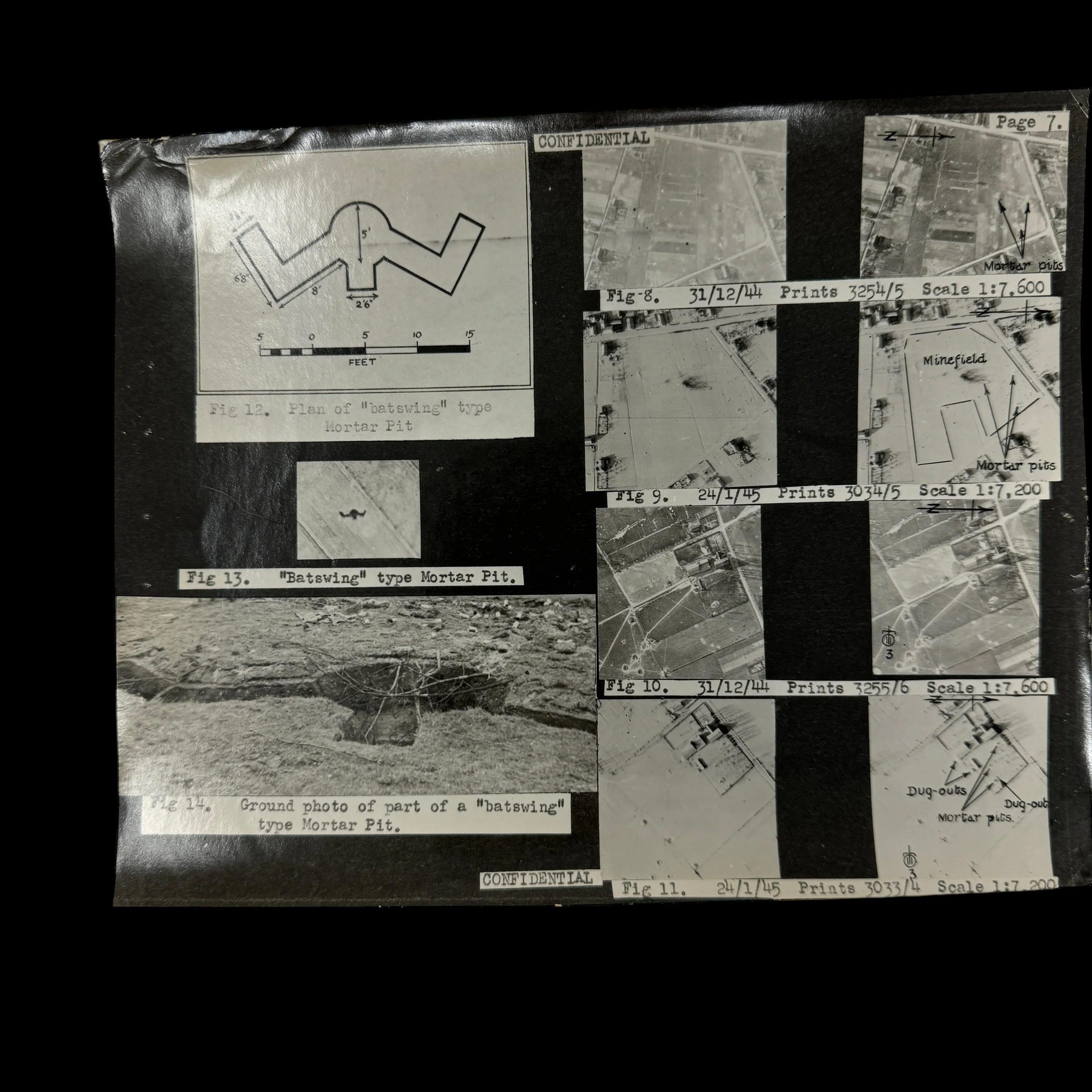
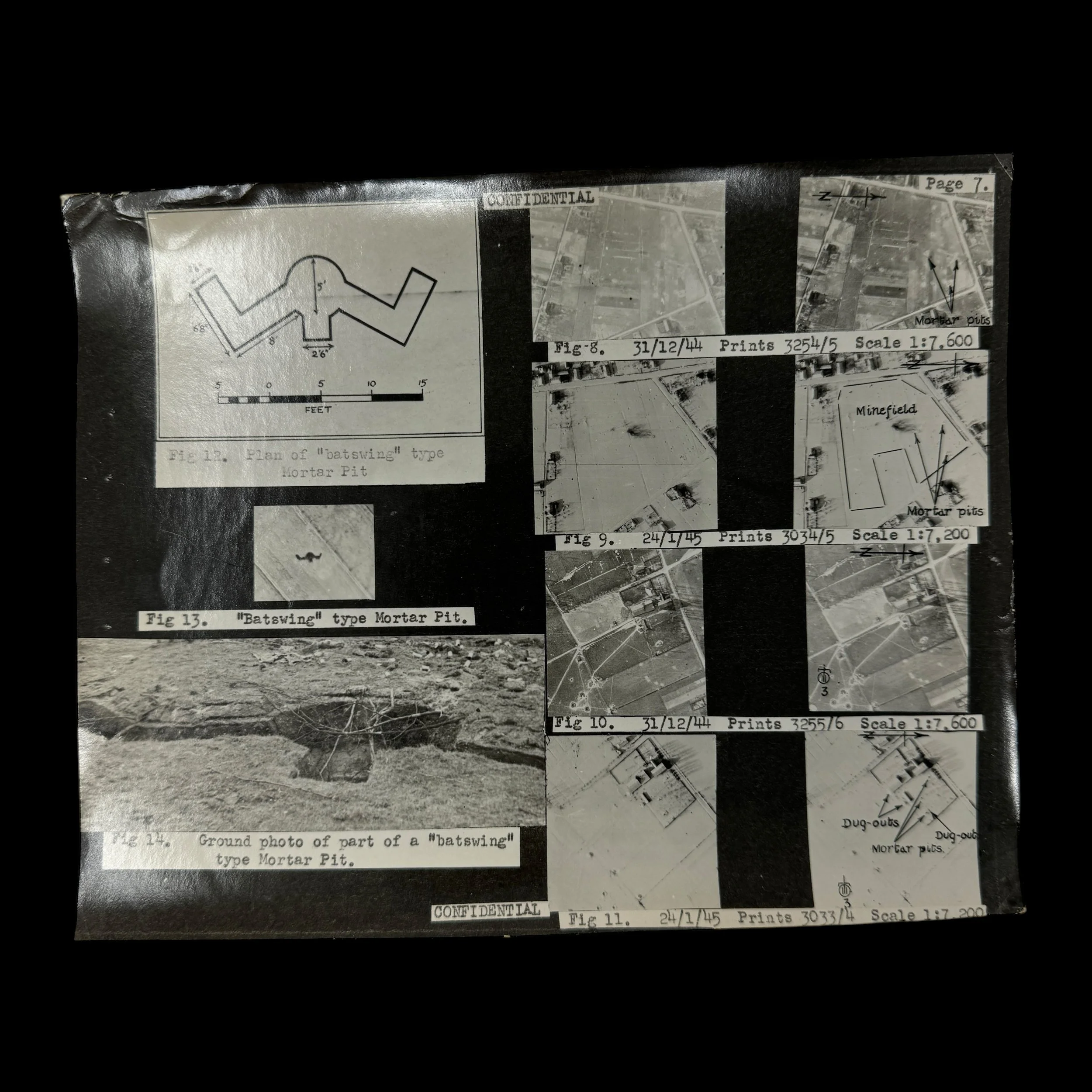

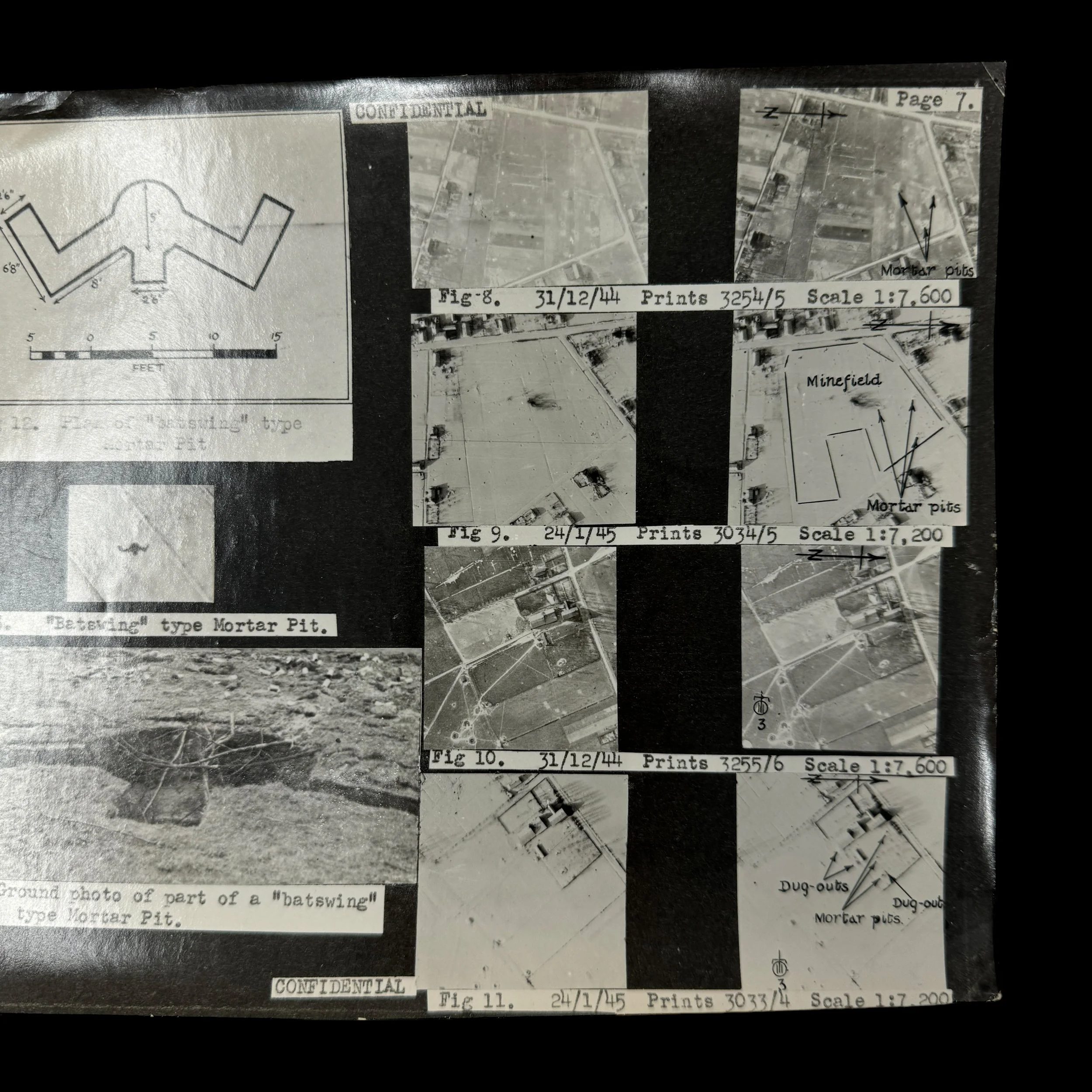
RARE! WWII 1945 CONFIDENTIAL "German Mortar Positions" 8th Air Force 100th Bomb Group (Siegfried Line Missions) Military Intelligence Report Grouping
Comes with a hand-signed C.O.A.
These extraordinarily rare and museum-grade WWII artifacts consist of an original 1945 grouping of a "CONFIDENTIAL" marked intelligence report and highly detailed aerial identification materials accompanied by mission reconnaissance and raid photographs. These intelligence reports were vital tools used by the 8th Air Force’s 100th Bombardment Group and their photo intelligence officers to gain critical insights into German defenses and installations as the Allies advanced deeper into Germany.
The intelligence contained within these reports provided an invaluable strategic advantage. As the Allies pushed forward, it was crucial for the aircrews to be intimately familiar with the ever-evolving landscape of German defenses. The reports offered up-to-date information on the locations and capabilities of German flak, mortar, and other gun installations, which were crucial threats to Allied aircraft and group troops. By studying these CONFIDENTIAL documents, airmen could identify targets with greater precision and minimize the risks during their missions.
Moreover, these reports played a significant role in the planning and execution of aerial operations. The detailed reconnaissance photographs allowed for the identification of strategic targets and enabled post-mission analysis, contributing to the effectiveness of future operations. The ability to anticipate and understand the positioning and strength of enemy defenses was a key factor in the success of the 100th Bombardment Group's missions and the overall air campaign.
This grouping not only represents a significant piece of WWII history but also offers a rare glimpse into the intelligence operations that underpinned the strategic bombing efforts of the Allies. The reports are a testament to the meticulous planning and preparation that went into each mission, reflecting the crucial role that intelligence played in securing victory during the war.
This intelligence grouping comes from the bring-back collection of a WWII navigator veteran who served extensively with the 100th Bomb Group (8th Air Force) during WWII. This 8th Air Force veteran also brought back ALL of his bombing raid mission maps during his time serving from 1942 till VE-Day in 1945. This veterans collection has been requested to be pieced out to spread the legacy of the airmen of the 8th Air Force that sacrificed their lives for our freedom. A portion of this sale is also being donated to the non-profit Honor Flight Network. The mission of Honor Flight is to transport America’s veterans to Washington, D.C. to visit the memorials dedicated to honoring those who have served and sacrificed for our country.
The 100th Bomb Group was constituted as a heavy bomber group inside the Eighth Air Force, which, at peak strength on D-Day, June 6, 1944, fielded 40 groups of Boeing B-17s and Consolidated B-24s. The 351st Bomb Group flew strategic bombing missions from their base at Polebrook, Northamptonshire from April 1943 to June 1945.
The 100th Bomb Group also known as the "The Bloody Hundredth", because of its reputation for losing a high number of aircraft and crews.
Over the course of 22 months of aerial combat, the aircrews of the 100th had served a deadly apprenticeship as they honed their skills and tactics. In an unemotional analysis of the raw numbers, the Bloody 100th’s wartime losses were not the worst suffered by the Eighth Air Force, though they were in the top three of losses by heavy bomber groups. The official history from the 100th Bomb Group Foundation cites 184 missing aircrew reports on 306 missions. In his memoir An Eighth Air Force Combat Diary, 100th copilot John Clark pointed out that “50% of the Group’s losses occurred in only 3% of its missions.” Like a gambler whose luck has gone cold, when the crews of the 100th had a bad day, they had a very bad day.
More than 26,000 Eighth Air Force personnel sacrificed their lives in service to the war effort. The total number killed or missing in action was slightly more than that suffered by the U.S. Marine Corps, and a little less than half the losses sustained by the entire U.S. Navy. Comparisons such as these do nothing to diminish the contributions of other military branches, but rather point out the gargantuan scale of the Eighth Air Force’s effort. The 100th Bomb Group’s portion of those losses was 785 men killed outright or missing in action and 229 aircraft destroyed or rendered unsuitable for flight.
Full Mission History of the 100th Bombardment Group (Heavy) during WWII:
Constituted as 100th Bombardment Group (Heavy) on 28 Jan 1942. Activated on 1 Jun 1942. Used B-17’s to prepare for duty overseas. Moved to England, May-Jun 1943, and was assigned to Eighth AF. Operated chiefly as a strategic bombardment organization until the war ended. From Jun 1943 to Jan 1944, concentrated its efforts against airfields in France and naval facilities and industries in France and Germany. Received a DUC for seriously disrupting German fighter plane production with an attack on an aircraft factory at Regensburg on 17 Aug 1943. Bombed airfields, industries, marshaling yards, and missile sites in Western Europe, Jan-May 1944. Operations in this period included participation in the Allied campaign against enemy aircraft factories during Big Week, 20-25 Feb 1944. Completed a series of attacks against Berlin in Mar 1944 and received a DUC for the missions. Beginning in the summer of 1944, oil installations became major targets. In addition to strategic operations, the group engaged in support and interdictory missions, hitting bridges and gun positions in support of the Normandy invasion in Jun 1944; bombing enemy positions at St Lo in Jul and at Brest in Aug and Sep; striking transportation and ground defenses in the drive against the Siegfried Line, Oct-Dec 1944; attacking marshaling yards, defended villages, and communications in the Ardennes sector during the Battle of the Bulge, Dec 1944- Jan 1945; and covering the airborne assault across the Rhine in Mar 1945. Received the French Croix de Guerre with Palm for attacking heavily defended installations in Germany and for dropping supplies to French Forces of the Interior, Jun-Dec 1944. Returned to the US in Dec 1945. inactivated on 21 Dec 1945.